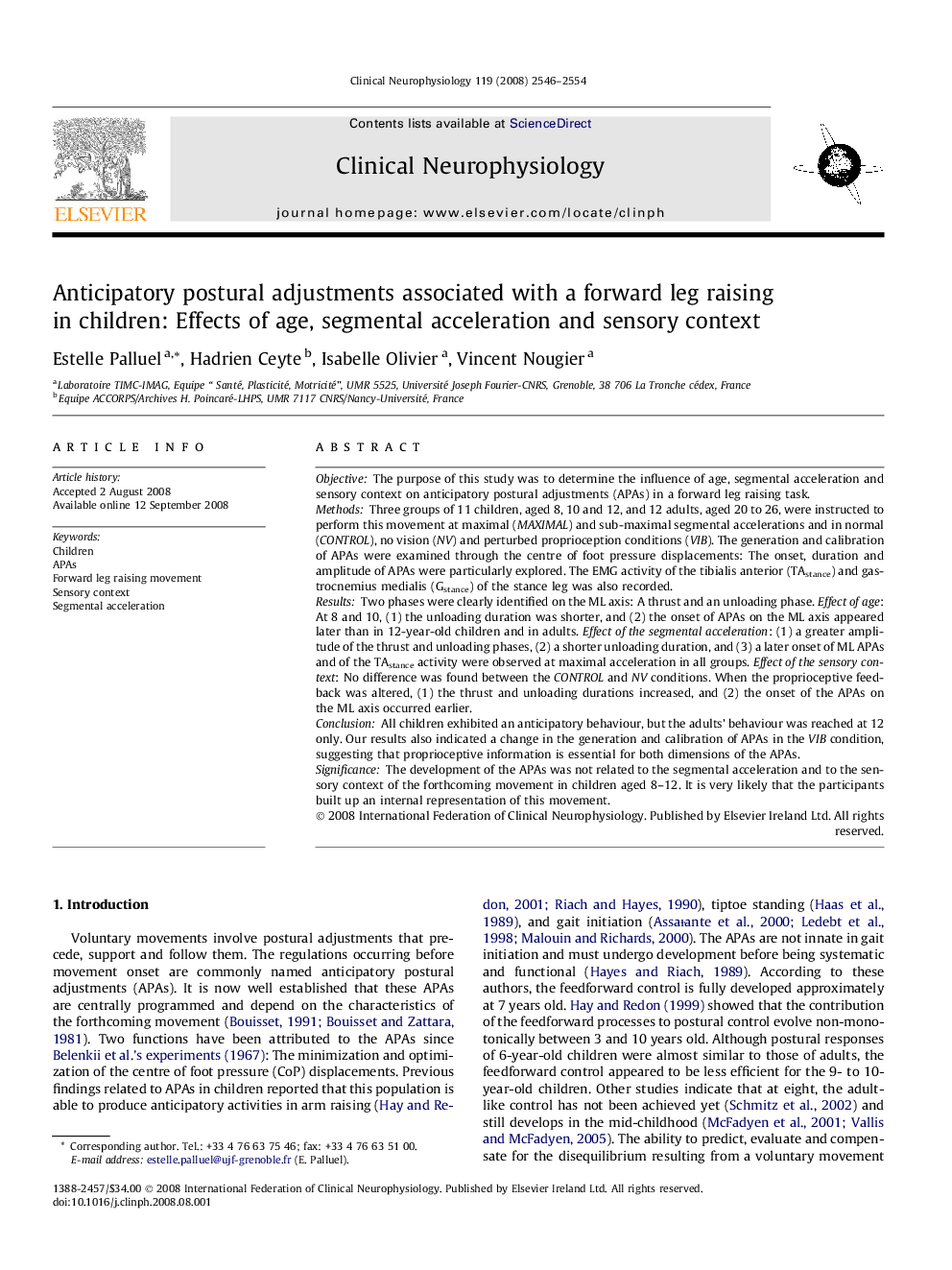| Article ID | Journal | Published Year | Pages | File Type |
|---|---|---|---|---|
| 3047015 | Clinical Neurophysiology | 2008 | 9 Pages |
ObjectiveThe purpose of this study was to determine the influence of age, segmental acceleration and sensory context on anticipatory postural adjustments (APAs) in a forward leg raising task.MethodsThree groups of 11 children, aged 8, 10 and 12, and 12 adults, aged 20 to 26, were instructed to perform this movement at maximal (MAXIMAL) and sub-maximal segmental accelerations and in normal (CONTROL), no vision (NV) and perturbed proprioception conditions (VIB). The generation and calibration of APAs were examined through the centre of foot pressure displacements: The onset, duration and amplitude of APAs were particularly explored. The EMG activity of the tibialis anterior (TAstance) and gastrocnemius medialis (Gstance) of the stance leg was also recorded.ResultsTwo phases were clearly identified on the ML axis: A thrust and an unloading phase. Effect of age: At 8 and 10, (1) the unloading duration was shorter, and (2) the onset of APAs on the ML axis appeared later than in 12-year-old children and in adults. Effect of the segmental acceleration: (1) a greater amplitude of the thrust and unloading phases, (2) a shorter unloading duration, and (3) a later onset of ML APAs and of the TAstance activity were observed at maximal acceleration in all groups. Effect of the sensory context: No difference was found between the CONTROL and NV conditions. When the proprioceptive feedback was altered, (1) the thrust and unloading durations increased, and (2) the onset of the APAs on the ML axis occurred earlier.ConclusionAll children exhibited an anticipatory behaviour, but the adults’ behaviour was reached at 12 only. Our results also indicated a change in the generation and calibration of APAs in the VIB condition, suggesting that proprioceptive information is essential for both dimensions of the APAs.SignificanceThe development of the APAs was not related to the segmental acceleration and to the sensory context of the forthcoming movement in children aged 8–12. It is very likely that the participants built up an internal representation of this movement.
